7 things to know about Glacier National Park
Glacier was established as a national park in 1910
Glacier National Park
Glacier National Park is a showcase of melting glaciers, alpine meadows, carved valleys, and spectacular lakes.
Glacier National Park is a showcase of melting glaciers, alpine meadows, carved valleys, and spectacular lakes.
With over 700 miles of trails, the park's scenery is unmatched and is a paradise for outdoor lovers seeking wilderness steeped in human history.
Here are seven things to know about one of the country’s most stunning natural wonders.
Park history
Glacier was established as a national park on May 11, 1910, in Montana. It was the eighth national park in the U.S., designated under President William Howard Taft.
It took two decades of advocacy, led by anthropologist and conservationist George Bird Grinnell, to convince Congress to establish Glacier as a national park.
Facts and figures
According to the NPS, the park covers more than 1 million acres – or around 1,580 square miles. It's located in northwest Montana with the closest sizable town being about 40 minutes away.
The biggest glacier in the park is Harrison Glacier. It currently covers over half a square mile of land. The largest lake is Lake McDonald, which is 9.4 miles long, 1.5 miles wide and 464 feet deep.
The highest point in the park is the summit of Mt. Cleveland. The peak of the park’s highest mountain reaches nearly 10,550 feet.
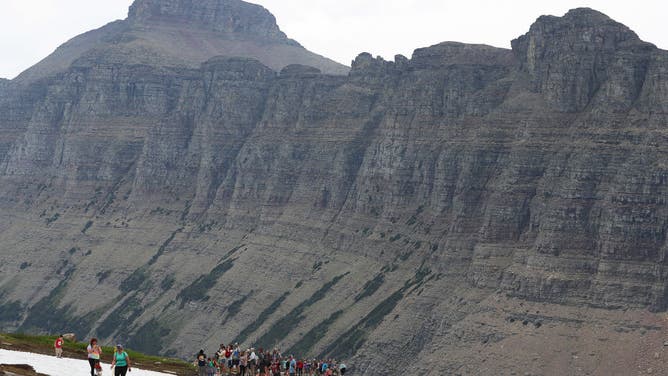
WEST GLACIER, MT - JULY 26: Visitors gather at a lookout point as they hike the Hidden Lake trail in Glacier National Park on July 26, 2018 in West Glacier, Montana. Over crowding in National Parks is becoming an escalating problem, the Park Service is struggling how to address.
(George Frey/Getty Images)
Glaciers shrinking in size
The park had 80 glaciers when it opened, but now it's down to 26.
According to the NPS, between 1966 and 2015, every named glacier in the park got smaller, some by more than 80 percent.
HOW ICE TRANSFORMS THE LANDSCAPE
In late summer when the glaciers are most visible, satellites can capture images to measure the areas of glaciers. These images have generally shown a trend of shrinking areas.
For some of the more accessible glaciers, scientists collect data in the field. Photographs of the glaciers taken repeatedly from the same vantage points on the ground confirm a reduction in area and also illustrate a reduction in thickness and overall mass.
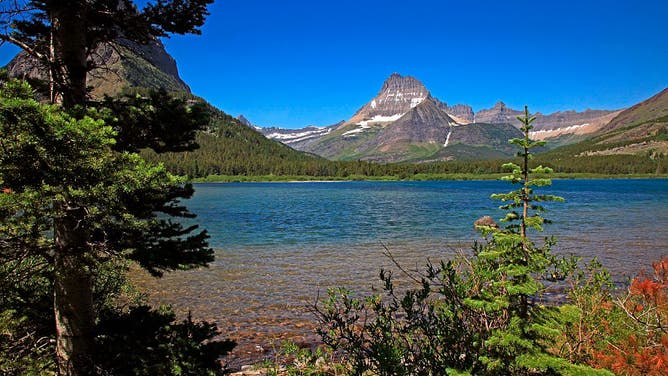
View of 9,321 foot elevation Mount Wilbur from Swiftcurrent Lake in Glacier National Park Montana in early summer, Swiftcurrent Lake is located in the Many Glacier area in the northeast section of Glacier National Park Montana and is accessed via a paved road into the park from Babb Montana.
(Education Images/Universal Images Group via Getty Images)
Land that now comprises Glacier previously belonged to Native American tribes
The NPS says physical evidence of human use dates back more than 10,000 years within the boundaries of Glacier National Park.
Numerous Native American tribes utilized the area around and within what is now the park for hunting, fishing, ceremonies, and gathering plants. When the first white explorers began arriving in the region, the Blackfeet controlled the prairies on the east side of Glacier, while the Salish, Pend d’Oreille, and Kootenai lived on the more forested west side.
According to the NPS, explorations to the area by white trappers as early as the 1700s opened the area, and the future Glacier National Park, to trading among European settlers and tribal communities. As resources were depleted, the tribes eventually signed treaties that would increasingly confine native people to reservations.
Today, the 1.5 million-acre Blackfeet Indian Reservation, which shares Glacier’s eastern border, is home to about 8,600 members of the Blackfeet Nation, the largest tribe in Montana. The Flathead Indian Reservation encompasses approximately 1.3 million acres mostly along the Flathead River and is home to approximately 7,000 members of the Confederated Salish and Kootenai Tribes of the Flathead Nation.
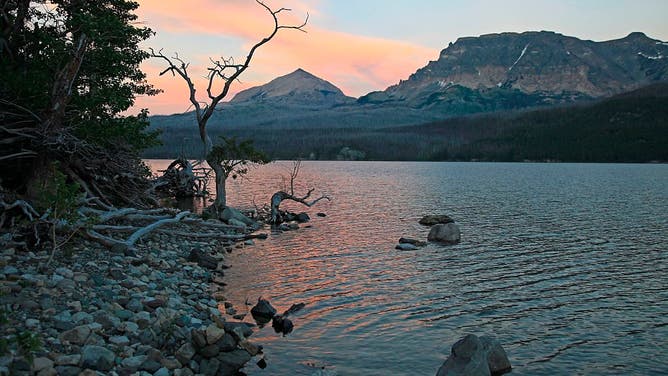
Sunset along the shoreline of Saint Mary Lake with Triple Divide Peak on the horizon in Glacier National Park Montana on a summer evening, Saint Mary Lake is 9.9 miles long and located on the east side of Glacier National Park along Going to the Sun Road, and the water coming off of 8020 feet elevation Triple Divide peak flows to the Pacific Ocean, the Atlantic Ocean, or to Hudson Bay depending upon the side of the mountain from which it flows.
(Education Images/Universal Images Group via Getty Images)
Going-to-the-Sun Road
Going-to-the-Sun is considered one of the best scenic drives in the country. It is the only road that goes across the park, cutting through it for 50 winding miles. Without stopping, it takes approximately 2 hours to drive the full 50 miles.
Wildlife such as mountain goats, bighorn sheep and grizzly bears may be present anywhere along the road.
Typically, the road is fully open by early July. Portions of the road may close due to weather. It’s typically fully open until the third Monday of October, but that may change due to weather conditions at any point.
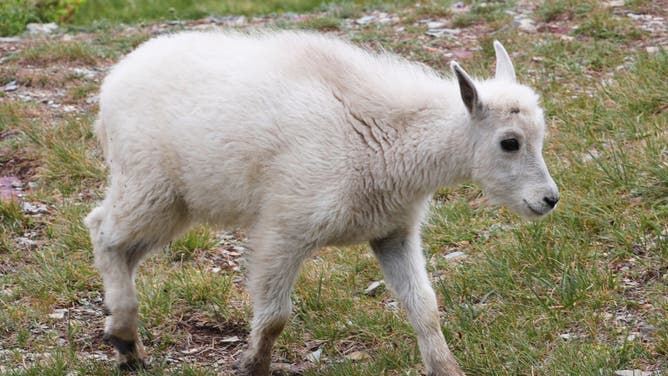
WEST GLACIER, MT - JULY 26: A baby mountain goat is seen along the Hidden Lake trail in Glacier National Park on July 26, 2018 in West Glacier, Montana. Over crowding in National Parks is becoming an escalating problem, the Park Service is struggling how to address.
(George Frey/Getty Images)
Straddles the Continental Divide
Going-to-the-Sun Road crosses the Continental Divide at Logan Pass, where the elevation is 6,646 feet. The Continental Divide makes up the route of one of the U.S.’s most prominent thru-hike, the Continental Divide Trail.
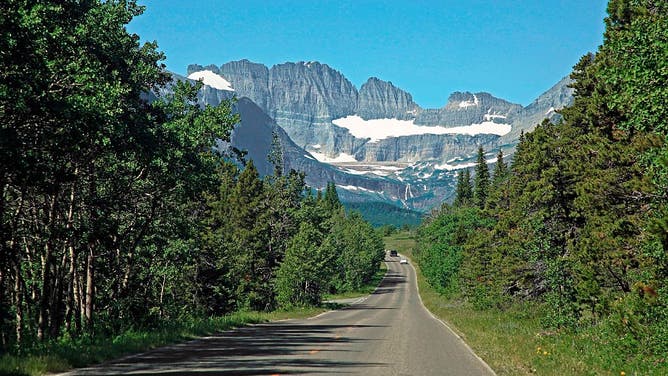
View of the mountains of the Many Glacier area of Glacier National Park from the road into the park from Babb Montana, The Many Glacier area is in the northeast part of Glacier National Park in Montana with the road into the mountainous valley of Many Glacier coming in to the park from Babb Montana.
(Education Images/Universal Images Group via Getty Images)
Expect large crowds
May through September is the busiest part of the year, with about 3 million people visiting during each summer season. The parking areas at popular destinations, like Logan Pass and Avalanche Creek, begin filling before sunrise and remain congested for most of the day.
The top 10 most popular hikes in the park, such as Grinnell Glacier, the Highline Trail, and Avalanche Lake, all average hundreds of hikers per day. In 2017, the Hidden Lake Trail averaged 1,604 hikers per day.

WEST GLACIER, MT - JULY 26: Visitors walk around the Logan Pass Visitor Center in Glacier National Park on July 26, 2018 in West Glacier, Montana. Over crowding in National Parks is becoming an escalating problem, the Park Service is struggling how to address.
(George Frey/Getty Images)
